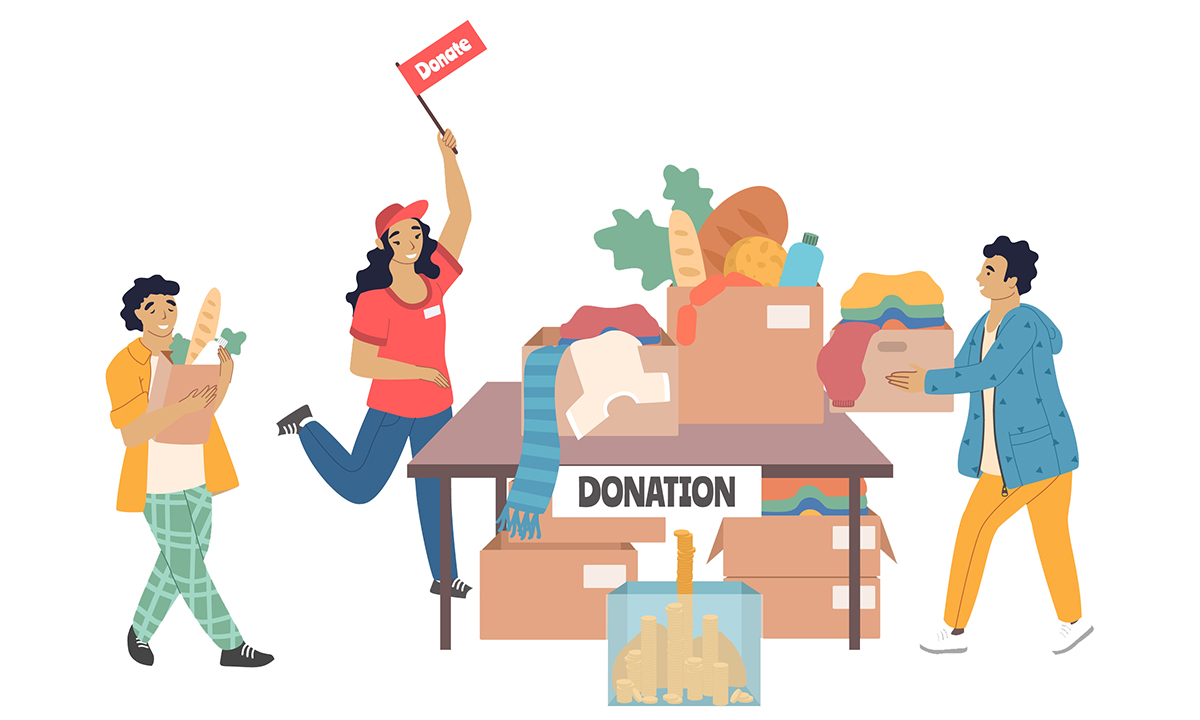10 Tips to Help Community Organizations Bring Needed Services into Schools
Bell & Roddie: From vision screenings and music programs to STEM lessons and grief counseling, community groups can help support teachers and students

Get stories like this delivered straight to your inbox. Sign up for The 74 Newsletter
As students return to school in the coming weeks, many will need extra support — not just with academics, but also with social and emotional development. This can’t just fall to teachers and other school staff. It’s up to everyone in the community to show up for young people.
Teachers are most certainly feeling the pressure. In a recent National Education Association survey of more than 3,000 educators, 67% said burnout was a major problem in the profession. Principals are feeling stressed, too. A new Rand Corp. survey found that nearly 85% of principals experience recurring job-related stress.
Community organizations like nonprofits, corporations, cultural institutions and social service agencies can play an important role in supporting teachers by joining them in support of students. Our nonprofit, Communities In Schools of Chicago, has been connecting neighborhood organizations with teachers and students for over 30 years. We’ve linked schools with everything from vision screenings and music programs to STEM lessons and grief counseling, provided by a network of more than 200 partners.
This programming not only takes the burden off school personnel; it provides students with resources that help them improve in math and reading. A randomized control trial study showed that students in Communities In Schools of Chicago partner schools were more proficient in math and reading compared to Chicago students in schools where Communities In Schools was not present.
Last year, Communities In Schools of Chicago connected more than 1,300 programs and services with Chicago public schools across the city. When the buildings were closed, they were provided virtually. When schools returned in person, we helped both school and community partners make the switch.
This experience has given us insight into challenges that organizations often face when sharing programs with schools, but it has also given us some solutions. One thing is clear: Students need community programs and resources now more than ever.
Here are some strategies for making an impact in schools, starting at square one:
1. Make sure the program has clear objectives, whether it’s one time only or multi-session.
Even before reaching out to a school, create a list of what you hope students will take away from your program and any connections to the curriculum. Make sure you can clearly and concisely answer some key questions that a school would need to know before setting things up: Who is the target audience? What do you want students to learn? How many sessions are there? How do you plan on delivering content? Presenting these details up front will make it easier for school staff to see how your program will help their students.
2. Find the right fit.
Once you have laid out the details, find a school that could benefit from your programming. Our school partnership specialists work with principals to understand the types of supports their students need. This information helps our community partnership specialists identify organizations that meet those needs. Demonstrating value and gaining buy-in from teachers are important for creating a successful collaboration for both your organization and the school.
3. Do the pre-work!
After identifying a school, chat with the program scheduler ahead of time about how to work with what students are learning in the classroom. In some schools, the program scheduler is the teacher; and in others, it’s a member of the administrative team. Ask about the classroom culture and student engagement. See if there are real-life examples you can use that will help students make the connection between your program and their own experiences. By familiarizing yourself with the students, you will be able to make your program’s content more meaningful to them.
4. Communicate effectively.
Maintain consistent communication from the start of scheduling through completion of the program and use a method of communication that works best for the school staff. Some might prefer email while others would rather talk by phone. Confirm the logistics of how you are delivering your program, what topics you will cover and when it will take place ahead of time. Even if you do not yet have an answer or need more scheduling time, communicate that with the school.
5. Engage the students.
Include a variety of activities throughout the program that allow the students to put the content into practice. For example, have students role-play scenarios if you’re demonstrating conflict resolution, or use Monopoly money if you are teaching financial management. See what connections they can draw to their own learning. Also, provide options for communicating and collaborating that are accessible to individuals with a variety of abilities and learning styles. Consider places in the program where you can pause and add brain breaks or breathing exercises.
6. Let your passion shine through.
Demonstrate your expertise, but more importantly, show your enthusiasm for the topic. Your passion will allow you to build deeper connections with your student audience, and your interest for the topic will undoubtedly resonate more than the content alone.
7. Stay flexible.
Be responsive to the needs of schools and students. Remote learning challenged everyone in new ways. Now, with students back in the classroom, be open to thinking creatively about approaches beyond the traditional lecture. Can you offer your program in-person and virtually? Know whether you can do both – or which style works better for you and the program.
8. Assess, assess, assess.
Evaluate your program’s quality, both in the moment and after the fact. At the end of your presentation, invite students to reflect on what they learned. Ask questions to ensure that what sticks with them is what you intended to teach. Ask for feedback from the teacher as well. If you need to, adjust your lesson plan.
9. Follow up.
Thank students and teachers for participating and hosting you in their classroom. Consider sending a recorded follow-up reminding students what they learned, or provide ideas for activities so teachers can extend the learning after the program concludes. This helps your organization develop relationships with school staff that are important long-term.
10. Invest in professional development.
If you are the one delivering the program, explore opportunities to grow and build new skills. Communities In Schools of Chicago provides our community partners with workshops throughout the school year that allow for professional development and networking.
Developing a program and delivering it in a classroom can be a daunting task, but schools are looking for support from their communities, especially this year. The more you can tailor your program to meet their needs, the more success you will find.
Get stories like these delivered straight to your inbox. Sign up for The 74 Newsletter

;)

